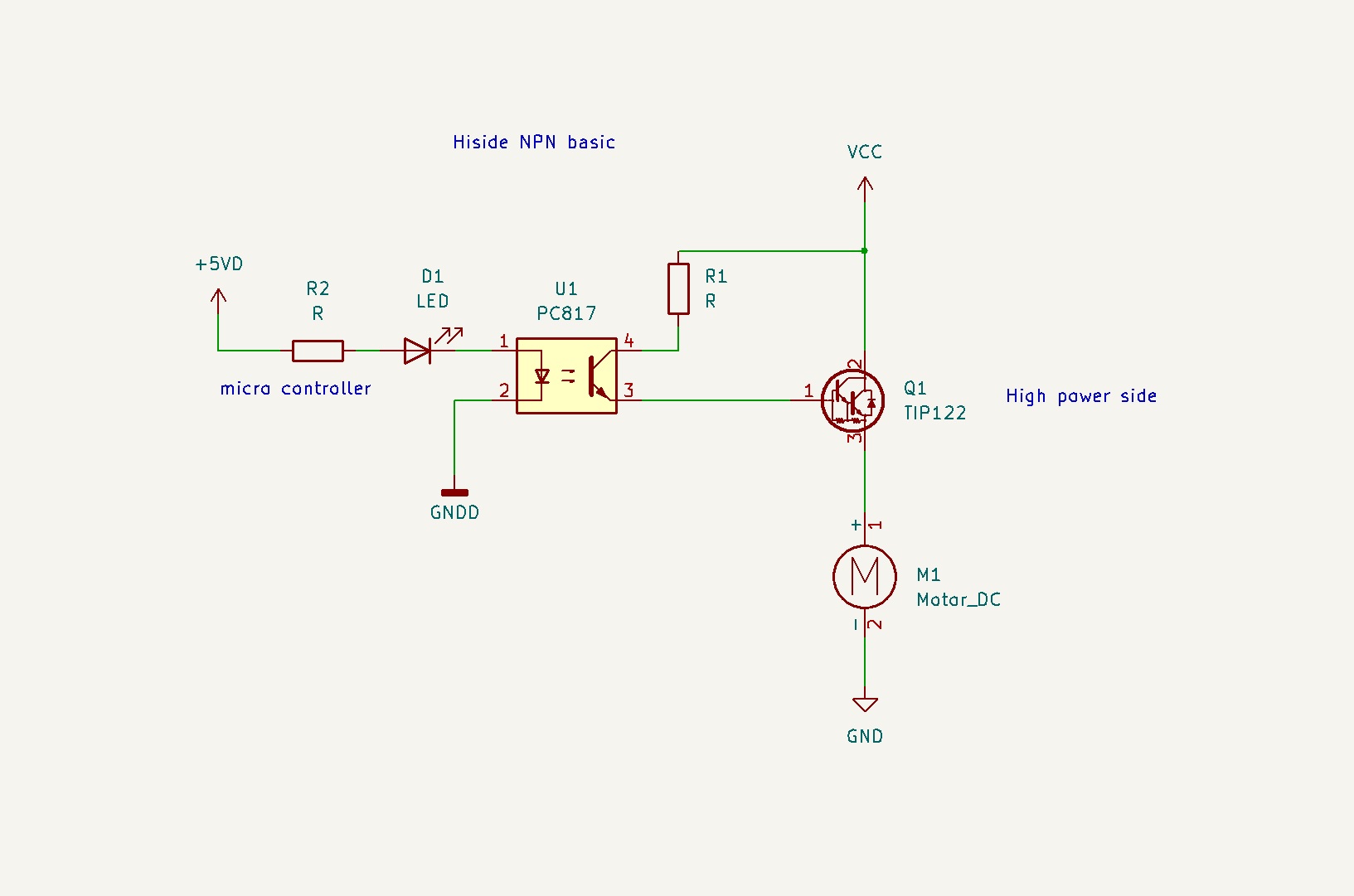Hi, I would like to use an npn transistor as a high side switch, but I have seen multiple websites stating that a pnp transistor should be used for a high side switch. Could someone tell me if it matters whether the npn transistor is used as a high side switch vs a low side switch? I don't understand why it matters whether the load is on the collector vs the emitter.
General Forum
Share your questions and also answer questions from others if you can. Show off your latest projects & suggest things we can improve. We would love to have suggestions on step-by-step projects we can create for you.
NPN use as high side switch?
This question has been flagged
1
Reply
370
Views
Hi
- An NPN transistor can indeed be used as a high side switch in conjunction with an optocoupler.
- When you use an NPN transistor on the high side, it means that the transistor is placed between the load and the positive supply voltage (Vcc).
- The optocoupler provides electrical isolation between the low-voltage control circuit (such as a microcontroller) and the high-voltage load.
- The optocoupler’s output transistor (usually an NPN) is controlled by an LED inside the optocoupler.
- By driving the optocoupler’s LED with a low current from the microcontroller, you can switch the external NPN transistor, which in turn controls the load.
- This configuration ensures that the base-emitter voltage of the NPN transistor remains constant, avoiding voltage drops due to the diode characteristics.
- Voltage Levels and Diode Drop:
- When using an NPN transistor as a high side switch, the base-emitter voltage (Vbe) is critical.
- The base voltage (Vb) should be high enough to turn on the transistor (typically around 0.7V for silicon transistors).
- If you drive the optocoupler’s LED with the microcontroller, the base voltage will be sufficient to activate the NPN transistor.
- However, keep in mind that the diode drop (0.7V) across the transistor affects the input-to-output voltage relationship.
- The output voltage (Vout) will be slightly lower than the input voltage (Vin) due to this diode drop.
- Switching Logic Levels:
- Using the optocoupler to switch the base of the external NPN transistor allows you to maintain the base voltage.
- Why Does It Matter?
- The choice between low-side and high-side switching depends on the specific application and circuit requirements.
- High-side switching can be more complex because:
- The transistor needs to handle the load voltage directly.
- The gate voltage for PNP BJTs or P-channel MOSFETs must be higher than the load voltage.
- Level shifting or specialized drivers may be necessary to interface with microcontrollers.
- Low-side switching is often preferred for simplicity, especially when the load voltage is lower than the control signal voltage.
Here are a option to use the NPN as high side switch control by microcontroller.
